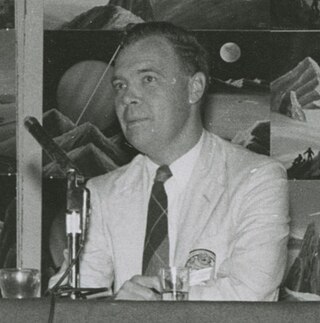
Harry Clement Stubbs, better known by the pen name Hal Clement, was an American science fiction writer and a leader of the hard science fiction subgenre. He also painted astronomically oriented artworks under the name George Richard.
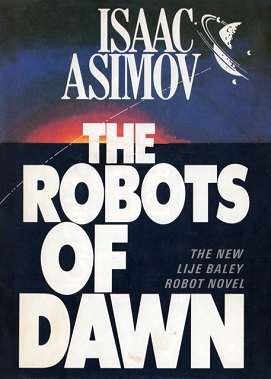
The Robot series is a series of thirty-seven science fiction short stories and six novels by American writer Isaac Asimov, published from 1940 to 1995. The series is set in a world where sentient positronic robots serve a number of purposes in society. To ensure their loyalty, the Three Laws of Robotics are programmed into these robots, with the intent of preventing them from ever becoming a danger to humanity. Later, Asimov would merge the Robot series with his Foundation series.
Reginald Bretnor was an American science fiction author who flourished between the 1950s and 1980s. Most of his fiction was in short story form, and usually featured a whimsical story line or ironic plot twist. He also wrote on military theory and public affairs, and edited some of the earliest books to consider SF from a literary theory and criticism perspective.
Galactic empires are a common trope used in science fantasy and science fiction, particularly in works known as 'space operas'. Many authors have either used a galaxy-spanning empire as background or written about the growth and/or decline of such an empire. The capital of a galactic empire is frequently a core world, such as a planet relatively close to a galaxy's supermassive black hole, which has advanced considerably in science and technology compared to current human civilization. Characterizations can vary wildly from malevolent forces attacking sympathetic victims to apathetic bureaucracies to more reasonable entities focused on social progress and anywhere in between.

Foundation's Friends, Stories in Honor of Isaac Asimov is a 1989 book written in honor of science fiction author Isaac Asimov, in the form of an anthology of short stories set in Asimov's universes, particularly the Foundation universe. The anthology was edited by Martin H. Greenberg, and contributing authors include Ray Bradbury, Robert Silverberg, Frederik Pohl, Poul Anderson, Harry Turtledove, and Orson Scott Card. It commemorated Asimov's 50th anniversairy as an author. A number of writers who contributed to the anthology are also portrayed on the book's cover.
The Golden Age of Science Fiction, often identified in the United States as the years 1938–1946, was a period in which a number of foundational works of science fiction literature appeared. In the history of science fiction, the Golden Age follows the "pulp era" of the 1920s and 1930s, and precedes New Wave science fiction of the 1960s and 1970s. The 1950s are, in this scheme, a transitional period. Robert Silverberg, who came of age in the 1950s, saw that decade as the true Golden Age. According to historian Adam Roberts, "the phrase Golden Age valorises a particular sort of writing: 'Hard SF', linear narratives, heroes solving problems or countering threats in a space-opera or technological-adventure idiom."
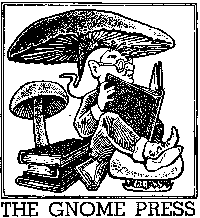
Gnome Press was an American small-press publishing company primarily known for publishing many science fiction classics. Gnome was one of the most eminent of the fan publishers of SF, producing 86 titles in its lifespan — many considered classic works of SF and Fantasy today. Gnome was important in the transitional period between Genre SF as a magazine phenomenon and its arrival in mass-market book publishing, but proved too underfunded to make the leap from fan-based publishing to the professional level. The company existed for just over a decade, ultimately failing due to inability to compete with major publishers who also started to publish science fiction. In its heyday, Gnome published many of the major SF authors, and in some cases, as with Robert E. Howard's Conan series and Isaac Asimov's Foundation series, was responsible for the manner in which their stories were collected into book form.
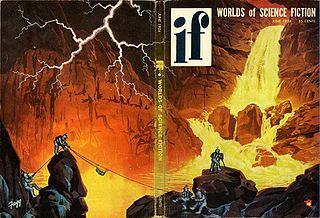
Fictional depictions of Mercury, the innermost planet of the Solar System, have gone through three distinct phases. Before much was known about the planet, it received scant attention. Later, when it was incorrectly believed that it was tidally locked with the Sun creating a permanent dayside and nightside, stories mainly focused on the conditions of the two sides and the narrow region of permanent twilight between. Since that misconception was dispelled in 1965, the planet has again received less attention from fiction writers, and stories have largely concentrated on the harsh environmental conditions that come from the planet's proximity to the Sun.

Saturn has made appearances in fiction since the 1752 novel Micromégas by Voltaire. In the earliest depictions, it was portrayed as having a solid surface rather than its actual gaseous composition. In many of these works, the planet is inhabited by aliens that are usually portrayed as being more advanced than humans. In modern science fiction, the Saturnian atmosphere sometimes hosts floating settlements. The planet is occasionally visited by humans and its rings are sometimes mined for resources.

NESFA Press is the publishing arm of the New England Science Fiction Association, Inc. The NESFA Press primarily produces three types of books:
The Edward E. Smith Memorial Award for Imaginative Fiction, or Skylark, annually recognizes someone for lifetime contributions to science fiction, "both through work in the field and by exemplifying the personal qualities which made the late 'Doc' Smith well-loved by those who knew him". It is presented by the New England Science Fiction Association at its annual convention, Boskone, to someone chosen by a vote of NESFA members. The trophy is a large lens mounted on a simple plinth.
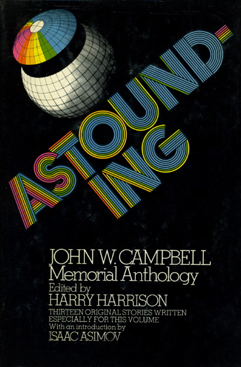
Astounding: John W. Campbell Memorial Anthology is a 1973 anthology honoring American science fiction and fantasy editor John W. Campbell, in the form of an anthology of short stories by various science fiction authors, edited by Harry Harrison. It was first published in hardcover by Random House as a selection of the Science Fiction Book Club, and first published in paperback by Ballantine Books.

Masterpieces: The Best Science Fiction of the Century (2001) is a science fiction anthology edited by American writer Orson Scott Card. It contains twenty-six stories by different writers.

Isaac Asimov Presents The Great SF Stories 25 (1963) is an American collection of science fiction stories, the last regular volume of the Isaac Asimov Presents The Great SF Stories series of short story collections, edited by Isaac Asimov and Martin H. Greenberg, which attempts to list the great science fiction stories from the Golden Age of Science Fiction. They date the Golden Age as beginning in 1939 and lasting until 1963. This volume was originally published by DAW books in July 1992.

Comets is an anthology of science fiction short stories edited by Isaac Asimov, Martin H. Greenberg and Charles G. Waugh as the fourth volume in their Isaac Asimov's Wonderful Worlds of Science Fiction series. It was first published in paperback by Signet/New American Library in February 1986.

Alternate Empires is an anthology of alternate history science fiction short stories edited by Gregory Benford and Martin H. Greenberg as the first volume in their What Might Have Been series. It was first published in paperback by Bantam Books in August 1989, and in trade paperback by BP Books in March 2004. It was also gathered together with Alternate Heroes into the omnibus anthology What Might Have Been: Volumes 1 & 2: Alternate Empires / Alternate Heroes.

Dinosaurs is an anthology of science fiction short works edited by Martin H. Greenberg. It was first published in hardcover by Donald I. Fine in February 1996, with a second edition issued by Niagara/Ulverscroft in October of the same year.
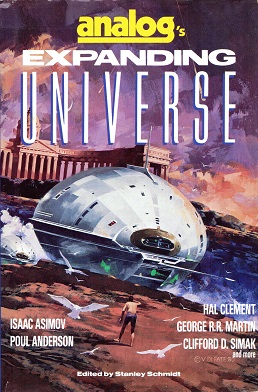
Analog's Expanding Universe is the tenth in a series of anthologies of science fiction stories drawn from Analog magazine and edited by then-current Analog editor Stanley Schmidt. It was first published in hardcover by Davis Publications for Longmeadow Press in 1986.














